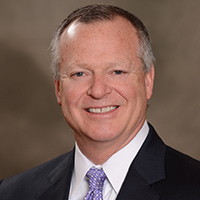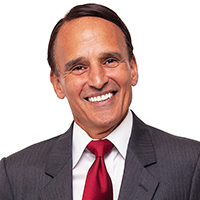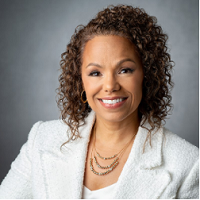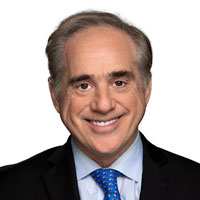HFMA’s Annual Conference showcased a healthcare industry working to innovate and thrive amid the COVID-19 pandemic and other challenges
The event featured insights on overarching trends that are affecting the industry and offered solutions for day-to-day concerns in healthcare finance.
HFMA’s 2021 Annual Conference, the Association’s first in-person national event in two years and the signature event of its 75th anniversary year, underscored an industry at the crossroads of a lingering pandemic and various daunting trends.
Yet the Nov. 8-10 event in Minneapolis also highlighted the capacity of finance professionals to help steer the industry toward innovative solutions that can transform health and healthcare.
It’s true that the industry’s performance is lagging in key areas such as consumer-friendly business practices and diversity, equity and inclusion, HFMA President and CEO Joseph J. Fifer, FHFMA, CPA, said during the opening general session.
“All in all, there is still a lot to be concerned about” in those areas, he said. “Maybe a lot to be critical of.”
However, there’s also reason to think healthcare “is on the cusp of something very cool.”

Joseph J. Fifer, president and CEO, HFMA
If finance professionals start by bringing an appropriate level of curiosity to their jobs, Fifer said, they can take the industry in bold new directions that will strengthen hospitals and health systems relative to pre-pandemic times.
“We have changed in the last 18 months, and some of that change will be for the better,” Fifer said. “Someday when we look back at this time, distance will give us the perspective to be grateful for what we learned.”
Big-picture trends
Inefficient healthcare spending and clinician burnout reveal a medical culture in need of an overhaul, said Robert Pearl, MD, former CEO of The Permanente Medical Group.
That culture also is an asset, fostering dedication and ingenuity — but it needs to evolve with the times, Pearl said during a keynote presentation.
For example, “As a nation, we do a terrible job at managing chronic disease,” Pearl said. “It’s not that we couldn’t do better. It’s the culture. We value the physician who unblocks the coronary artery far more than the physician who prevents it from being occluded in the first place.”
Providers need to prepare for external pressure on pricing to serve as an impetus for a greater focus on preventive care, Pearl said.

Robert Pearl, former CEO, Permanente Medical Group
Cultural issues also can affect the ability of providers to promote health equity and to assemble staffs that reflect their communities, said Tammie Jackson, FHFMA, MHA, CHFP, 2021-22 Chair of HFMA, in a talk that drew a standing ovation from attendees.
She urged members to consider their roles in establishing a healthcare system that boosts quality and access for historically overlooked segments.
Steps could include designing “a revenue cycle strategy that can be executed equitably across all demographic groups; an accessible digital front-door strategy that makes healthcare more financially attainable for all, regardless of socioeconomic status; or a telehealth strategy that is inclusive,” Jackson said.
“And even if you are not the one that is building these strategies, writing these policies or purchasing or selling these assets, if you become a critical and an important filter to help identify and call out where you see inequities so that we can bubble those up and address them — no matter your role in this industry, there is much that we can do to make bold decisions and promote health equity.”

Tammie Jackson, 2021-22 Chair, HFMA
While Pearl referred to the advantages of an organizational structure such as Kaiser Permanente, describing it as “an integrated, capitated, technologically enabled system,” David Shulkin, MD, former secretary of the U.S. Department of Veterans Affairs, found some of those same characteristics when he went to work at the VA.
The ability of the department to provide holistic care and address the social determinants of health went far beyond what typically is seen in the more fragmented private sector, Shulkin noted during a keynote presentation. Where possible, the industry at large should strive to establish a similar approach.
“The VA’s model of care was not just physical care, what I learned in medical school,” Shulkin said. “It was spiritual, it was emotional, psychological, economic, all integrated together in a way that really addresses these social determinants.”

David Shulkin, former secretary, U.S. Department of Veterans Affairs
Practical takeaways
The Annual Conference featured more than 80 sessions across seven content tracks. Among the many insights:
Accounting and Finance. Rating agencies were focused on the cash reserves of hospitals and health systems at the start of the COVID-19 pandemic. Twenty months later, that hasn’t changed much, said Ric Magnuson, executive vice president and CFO with Minneapolis-based Allina Health System, during the panel session “Managing Rating Agency and Investor Relations in Turbulent Times.”
“The big concern right now is the CMS repayment dollars and, as we go through this next year, what that’s going to do to your balance sheet,” Magnuson said. “Most of them take that out of your equation as they’re looking at it. They’re adjusting for that.”
Business Strategy. In the session “Impacting Health Equity from the CFO’s Chair,” Northwell Health CFO Michele Cusack said her organization’s approach to increasing equity is heavily based on building community engagement. It requires a full commitment to the principles behind the effort, not just the expected payoff, she added.
Cusack outlined immediate action items for CFOs:
- Look inward at your own finance staff and hiring practices.
- Work with your local community to define opportunities for collaboration and invest in the social components of health equity.
- Activate the social drivers of health in risk-based models.
- Engage with your board of directors and coordinate with state and local regulators.
- Recognize you may not be able to do it all.
Cost Effectiveness of Health. Faced with capital needs that exceeded its available funds, Providence Heart Institute in Washington state restructured its operation, creating both clinical and financial benefits.
Instead of having two underperforming facilities and one strong performer, the institute centralized the programs in a single center of excellence with one chief of surgery, Matthew Ducsik, associate vice president, explained during the presentation “Centers of Excellence for Specialty Services: A Strategy for Value-Based Care.”
All surgeons were credentialed at each affiliated hospital in the organization’s Puget Sound service area, and common standards and metrics for quality and affordability were adopted. Other aspects of the restructuring included integrating services to create a seamless experience and engaging payers as partners.
Consumerism. Telehealth is an effective mechanism for providing an optimal patient experience, even in the case of emergency care, said Annemarie Sheets, MD, in the session “Value in Healthcare: Right Information, Right Place, Right Time.”
Sheets sees a tele-EP (emergency physician) model as a vital tool in channeling the fundamental value that physicians bring to healthcare, namely their ability to gather, interpret and apply patient information.
“Tele-EP translates, organizes and interprets the patient’s health problem into a formal medical document, enhancing doctor-patient communication and improving collaboration between physicians,” said Sheets, who previously launched MD at Bedside, an urgent-care house-call practice.
Emerging Technology. Telehealth investment also can establish an optimal infrastructure for treating substance-use disorders (SUDs), according to the presentation “Building a Substance Use Disorder Program with Your Telehealth Investment.”
Telehealth can be applied to all four levels of SUD care as designated by the American Society of Addiction Medicine: outpatient treatment, intensive outpatient or partial hospitalization, residential treatment and hospital inpatient treatment.
An effective telehealth SUD program utilizes a facilitator — essentially a case manager — who establishes the connectivity with the patient and ensures the patient understands the treatment plan and has the resources to comply.
Leveraging Data and Analytics. North Mississippi Health Services in Tupelo implemented a rolling forecast model as the pandemic began, giving the seven-hospital health system financial-planning data at a time when it was desperately needed, leaders said in “Using Financial Analytics to Respond to Major Changes in the Healthcare Industry.”
Adam Crouch, FHFMA, director of decision support, said North Mississippi Health’s rolling forecast model has three main parts. The first phase entailed creating a data governance structure to define budget categories and other variables.
Also, for consistency’s sake, key statistics needed to be chosen for their ability to tell the financial story of the system’s performance.
Finally, the model required the application of a strategic process to consider issues such as how external pressures will affect cost structure and volumes.
Revenue Cycle. Cooperation between providers and payers can enhance billing processes, an especially important goal in this era of rising cost-sharing, according to the session “Transforming the Patient Billing Paradigm with Payer and Provider Collaboration.”
Because patients’ likelihood of paying their bills comes down not only to affordability but also to issues of convenience and simplicity, coordination between payers and providers can be a game-changer.
“About 30% of the time, we found payer EOBs do not match the provider bill,” said Seth Cohen, president of Cedar. “Sometimes it’s small — different language, things are formatted differently, it’s hard to follow where the balances correspond. When you’re a patient and you’re looking at an EOB and a bill from a provider and they don’t match, you throw them away. You assume something needs to be reprocessed.”
On the horizon
HFMA’s Annual Conference is scheduled to return to its usual late-June window in 2022, meaning next year’s event is a little more than seven months away.





